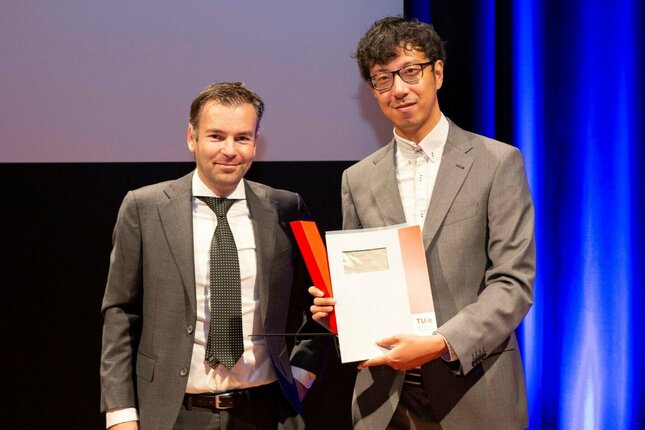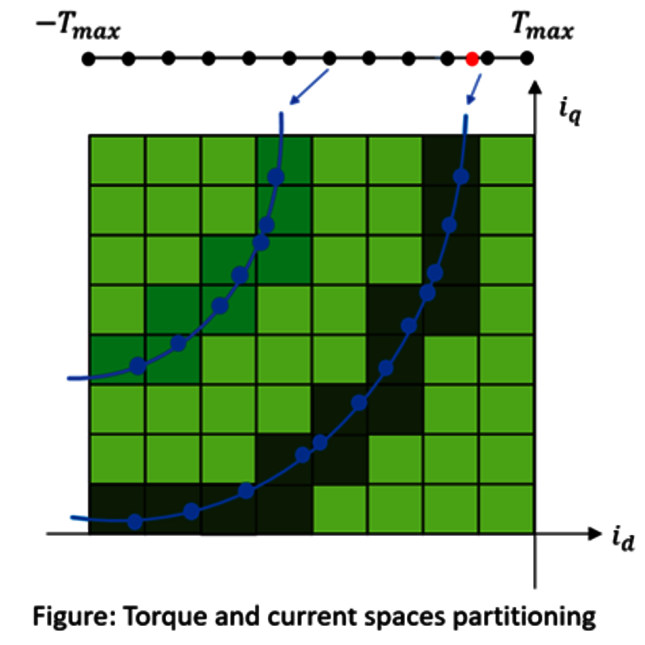Researcher in the Spotlight: Son Guo
Song Guo the first MSD EngD graduate with Cum Laude
As of December 15th 2021 the adagium Cum Laude can be proposed by the EngD (then PDEng) evaluation committee. The EngD Board of Examiners from that EngD program can approve the Cum Laude for the diploma. Cum Laude is provided to EngDs that receive a 9 or higher from their thesis examination committee which consists of at least their university supervisor, their company supervisors, and two external advisors. Song Guo was the first EngD trainee from the Mechatronic Systems Design program at Eindhoven University of Technology to receive Cum Laude for his graduation project. We congratulate Song with this historic achievement! Song explains his project below.
“I think that this is a very common, helpful topic for humankind”
Hi, my name is Song Guo. As a EngD at TU Eindhoven, I was in the Automotive/Mechatronic Systems Design research group in the Department of Mathematics and Computer Science. My research was mainly about current control and reference generation for various permanent magnet synchronous motors (PMSMs).

There were several challenges in this. First, their existing control module was mainly developed for one type of motor, but our goal is to control different types of synchronous motors. The controller is therefore not adaptive enough for all kinds of customers. Second, the current reference generation method is not optimal. We also think that the control performance can be improved in many aspects, especially in response time, as we would like to have the motor and its physical properties respond as fast as possible while achieving more stable performance.
A flexible controller
At the beginning of my project, my current company – e-Traction, now called Saietta Europe – approached me with a question about motor control. They aim to design a new motor controller which is compatible with different types of PMSMs and can be applied in various products, ranging from high-performance electric vehicles (EVs) to other industrial applications. The problems lie in motor current control and current setpoint generation.
A more effective algorithm
Following the well-known V-model development cycle, I started by drafting the project concept, goal and requirements with my colleagues. The previous design was reproduced and the pros and cons of the existing algorithms were investigated. Literature research was done to see if there are other solutions which are suitable for our situations.
Based on the study, we proposed several new algorithms combining the existing techniques and other advanced computational methods. After the implementation, simulations at the software level and tests on the hardware-in-the-loop (HIL) setup were performed. From the HIL tests, it was found that our current reference generation strategy and current control algorithm perform faster and are more stable than the existing solution for different types of motors under different test conditions. At this moment, we are working on some real-time tests on motors in order to further validate and verify our design.
A greener world
PMSMs have been widely accepted by the leading vehicle manufacturers that design EVs, including Tesla and many electric bus companies. In addition to their high energy efficiency and high power-to-size ratio, a big advantage of PMSMs is that they are more environmentally friendly. They use electricity instead of fossil fuels, helping us to reduce our carbon emissions and improve urban air quality and public health. Our motor control algorithms will enhance the motor performance at the vehicle level so that PMSMs can be a stronger competitor to traditional combustion engines and the EV market share can be boosted. In this way, our impact on the environment will be minimized and the world will be greener. I think that this is a very common, helpful topic for humankind.
